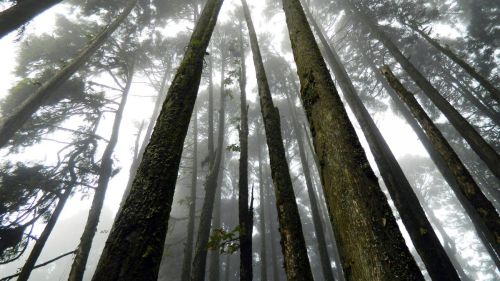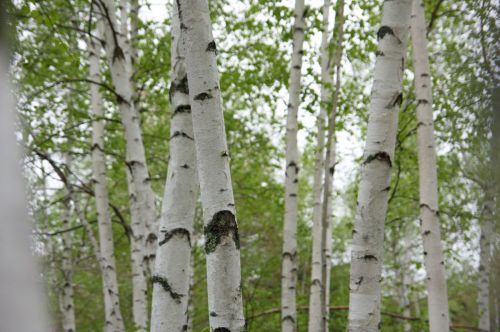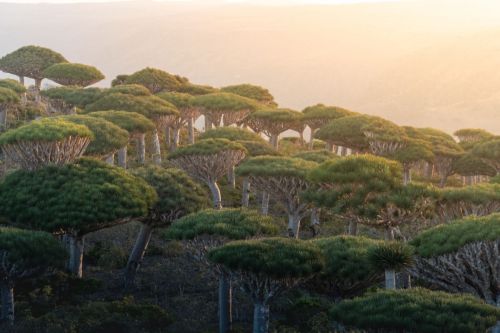Tropical rainforests have existed on Earth for hundreds of millions of years, and most of them now cover parts of the Mesozoic supercontinent of Gondwana. As a result of the breakup of Gondwana, tropical rainforests spread to five major regions of the world.
Today, they are one of the most important, if not the most important, systems for sequestering atmospheric carbon dioxide and producing oxygen. That's why it's so important to protect these often over-exploited and neglected regions of our planet with determination, persistence and resolve.
They are characterized by high rainfall and the absence of a dry season.
Equatorial forests grow in tropical America, Africa, Southeast Asia, Madagascar, parts of Australia, and New Guinea.
They owe this name to the fact that more than 25% of all natural medicines have been discovered there.
This makes them less fertile, but there are areas of fertile soil, mostly volcanic.
Red soils are well-weathered, red clay soils that are acidic and poor in essential nutrients such as calcium and potassium. The clay they contain inhibits water permeability.
Ferralitic soils have similar characteristics to red clay soils, but due to the lack or low amount of clay, they provide good water permeability.
It is likely that tropical forests contain many millions of species of plants, insects, and microorganisms that have yet to be discovered.
These are roots that grow from the side of the trunk above the soil surface and branch out all the way around. This type of root develops in plants that live in areas where nutrients are found in the upper layers of the soil rather than deep underground, so it is ideally adapted to red and iron-rich soils.
Most of them are engaged in hunting and gathering or agriculture. These tribes may have inhabited the forest areas for thousands of years and have only recently been discovered by Western civilization through the development of technologies such as satellite and aerial photography.
In Brazil alone, 67 such tribes have been discovered, and in New Guinea, 44.
Each layer is a unique concentration of flora and fauna and is called a floor. We distinguish the following layers:
The vegetation that grows there is quite poor and sparse, as few species are able to function in such conditions. Most of the plants of the lowest level can be found in the periphery, in forests, clearings and around water.
The lowest floor is inhabited by the largest animals found in rainforests, such as the gorilla, okapi, sumatran rhinoceros, tapir and all kinds of amphibians, reptiles and insects.
About 5% of the sunlight reaches this layer, so it is overgrown with shade-loving plants that provide habitat for birds, small mammals, insects, and reptiles. Because of the low light availability, plants in this layer tend to develop large leaves that make it easier to capture the precious rays of the sun.
It is made up of different types of trees that reach heights of 30 to 45 meters. Most of the flora of this layer consists of evergreen plants with large leaves. The trunks of the trees are often covered with epiphytes, plants that grow on other plants. The fauna present in this and the emergent level is mainly birds.
The difference is that the vegetation that covers it is 45 to 55 meters high, although there are species that reach heights of up to 80 meters. It is not uncommon for such tall trees to topple over, leaving open spaces in the canopy through which sunlight shines. Such incidents are very important for the proper functioning of equatorial forests, as it helps new plants to develop at each of the lower elevations.
Equatorial forests are home to 250 species of fruit trees, while temperate zone forests have only 20. The forests of New Guinea alone produce 251 species of trees with edible fruit.
Among the most dangerous and harmful factors leading to the destruction of these areas are:
Gold, silver, coltan (tantalum and niobium ore used in electronics manufacturing), oil and natural gas can be found there.
Poorer developing countries mine these resources, usually for export. Mining in Ghana, for example, has significantly damaged 88% of the country's original equatorial forest cover over several decades.
In addition to carbon, the vegetation also stores methane, thanks to soil bacteria. Successive deforestation of these areas reduces the amount of gases absorbed, which could lead to a rise in global temperatures. It has been estimated that if all of Africa's equatorial forests were logged, the average atmospheric temperature would increase by 2.5 to 5 °C.
Half of the rainfall in the Amazon is due to the functioning of the forests, which protect countries like Brazil, Argentina and Paraguay from drought. Excessive deforestation could lead to major disasters in the future, such as the 2014-2015 drought in Brazil.











